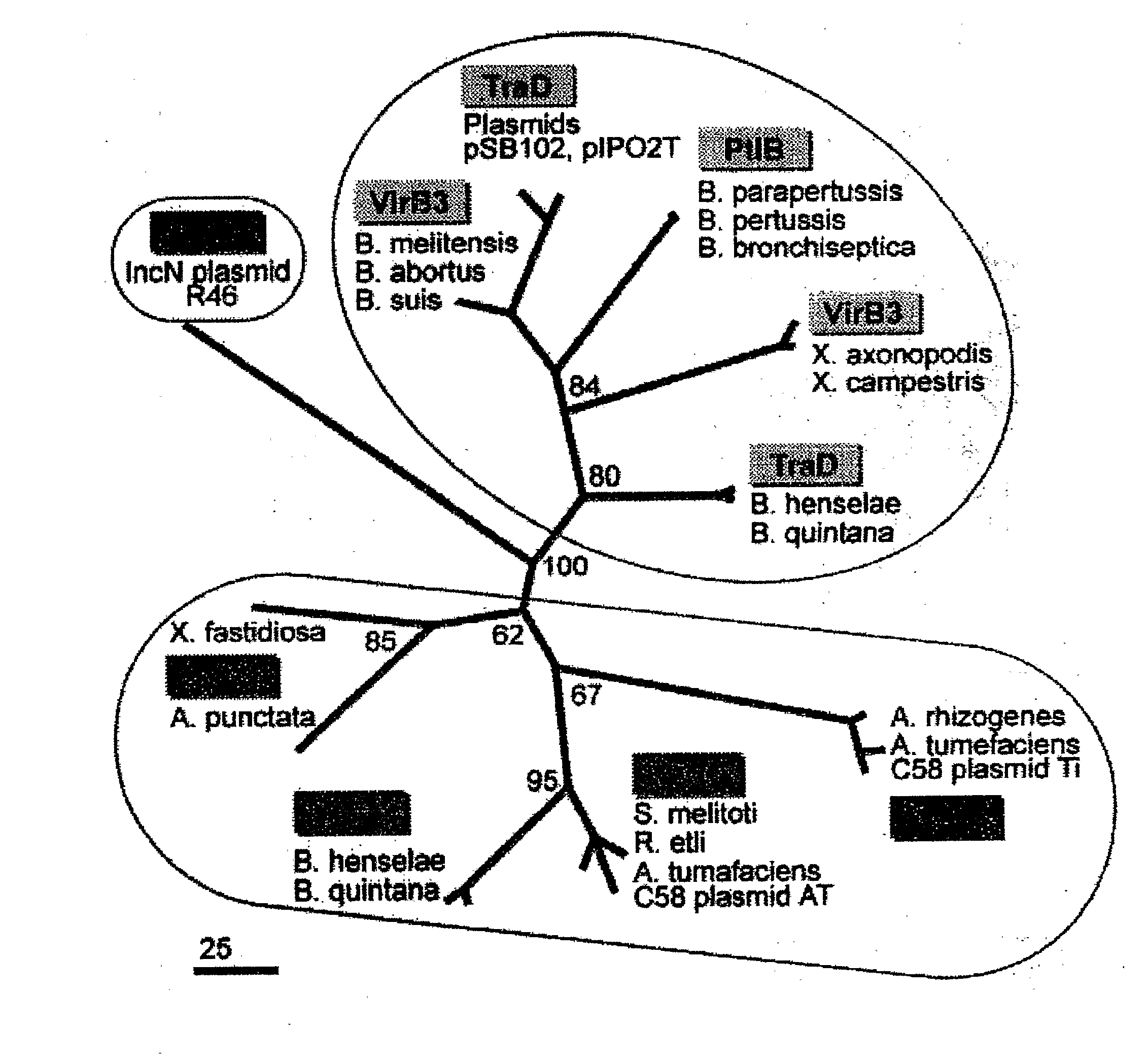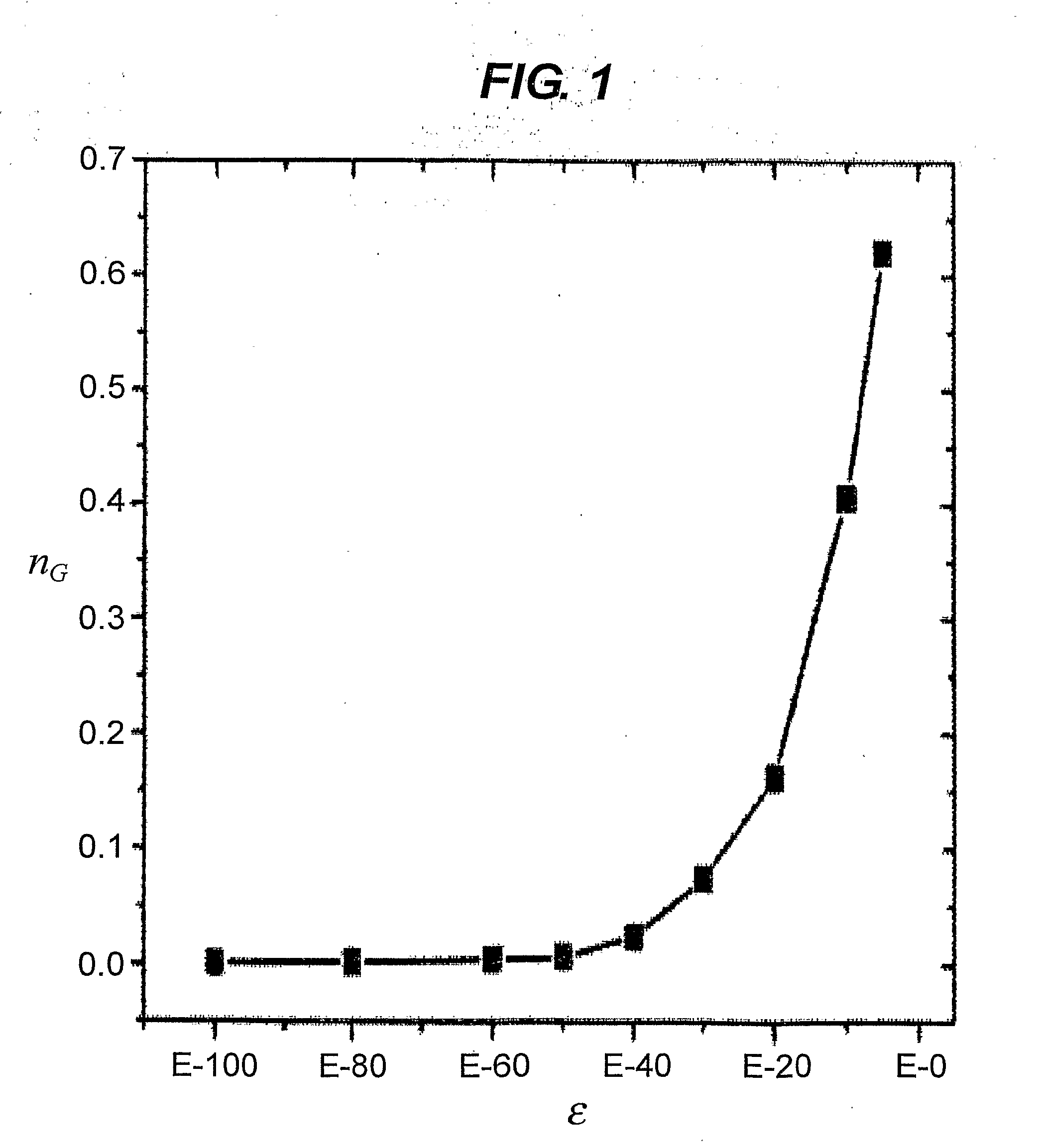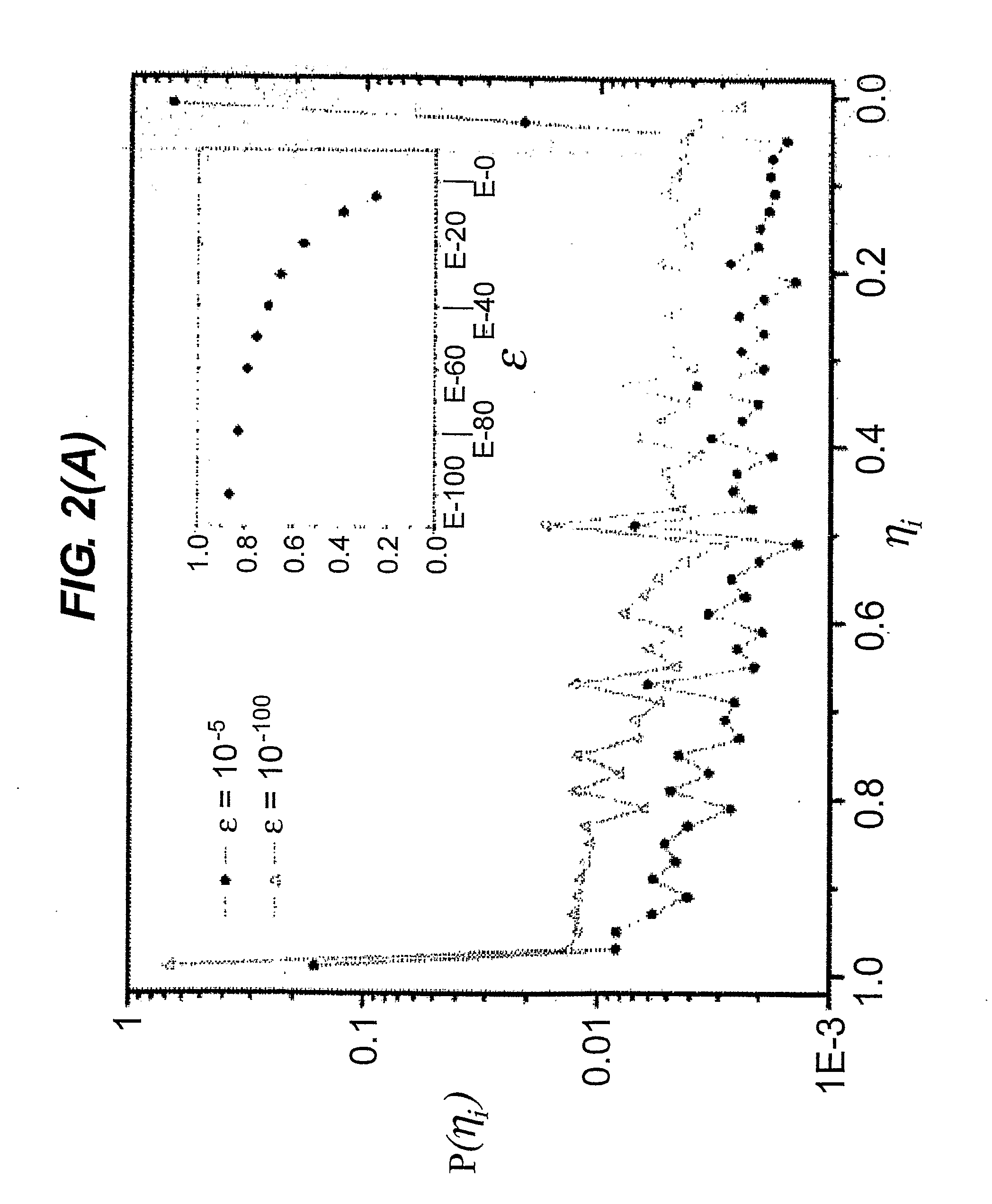Methods of Clustering Gene and Protein Sequences
a protein sequence and gene technology, applied in the field of bioinformatics, can solve the problems of inability to apply them to large datasets, the complexity of this task has grown enormously, etc., and achieve the effects of reducing computational load, less computational intensive, and more robustness
- Summary
- Abstract
- Description
- Claims
- Application Information
AI Technical Summary
Benefits of technology
Problems solved by technology
Method used
Image
Examples
example 1
Providing the Dataset of Similarity Indices
[0068]The amino acid sequences of 761,260 proteins of 256 completely sequenced bacterial genomes and 749 bacterial plasmids were downloaded from the NCBI web site (the complete list is provided in Table 1 below). An all-against-all Blast (21) search was performed, and a matrix containing the Blast E-values was generated. Since the E-value is not invariant for the exchange of the query and target sequences, we defined the symmetric E-value εij between the proteins i, j as εij=min (E-value(i, j), E-value(j, i)).
example 2
Generating the Sequence Similarity Network
[0069]To generate the sequence similarity network, a variety of different cutoffs for εij were tested to maximize the number of links between similar sequences while limiting the number of false similarity links. This effect in the sequence similarity network depends on the value of the homology cut-off ε adopted. For ε=10−180, 1.0·106 links are present. By partitioning the sequence similarity network with a single linkage clustering algorithm, 6.4·105 connected components were found, and 84% of the nodes of the network were singlets, i.e. isolated nodes. With increasing values of ε, more links were included in the network, causing the connected components to merge (See FIG. 1). For ε=10−5, the highest value of ε considered in this particular example, 6.6·107 links and 8.9·104 connected components were found; singlets included only 8% of the nodes, while the largest connected component contained more than 60% of the whole sequence similarity...
example 3
Optimizing the Network
[0072]To optimize the sequence similarity network, the cutoff used in this particular example was ε=10−5 to maximize the number of links. The sequence similarity network was re-wired by testing different θ cut-offs by connecting two proteins if and only if their overlap θij was smaller than the given cut-off (where 0<θ 1). With this procedure only links connecting nodes that share a certain degree of similarity between their nearest neighbor shells were retained. Nodes belonging to different communities were disconnected, and new links between nodes that were only second nearest neighbors in the original network were introduced.
[0073]For small values of θ, the network was still dominated by a single connected component including a large fraction of the nodes (the giant component discussed above). By increasing the cut-off of θ, the size of the largest cluster sharply decreased, and the giant component became disconnected into a set of smaller, compact sub-netwo...
PUM
| Property | Measurement | Unit |
|---|---|---|
| overlap threshold | aaaaa | aaaaa |
| nucleic acid | aaaaa | aaaaa |
| distance | aaaaa | aaaaa |
Abstract
Description
Claims
Application Information
 Login to View More
Login to View More - R&D
- Intellectual Property
- Life Sciences
- Materials
- Tech Scout
- Unparalleled Data Quality
- Higher Quality Content
- 60% Fewer Hallucinations
Browse by: Latest US Patents, China's latest patents, Technical Efficacy Thesaurus, Application Domain, Technology Topic, Popular Technical Reports.
© 2025 PatSnap. All rights reserved.Legal|Privacy policy|Modern Slavery Act Transparency Statement|Sitemap|About US| Contact US: help@patsnap.com



